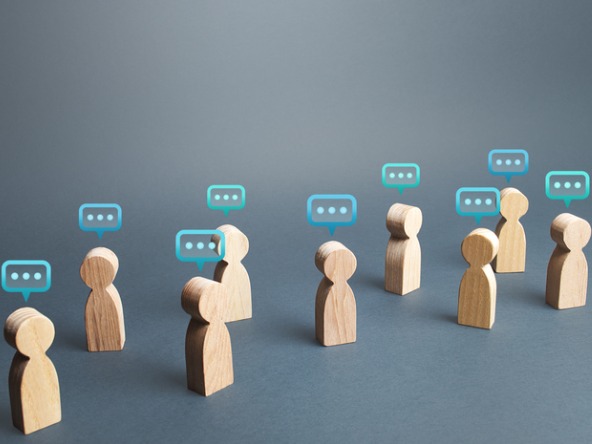Face-to-face vs online: The difficult conversation

The forced move to online during Covid-19 transformed fossilised technophobes like me into ‘Zoom lords’ almost overnight. Not surprisingly, critical faculties were suspended in the need to service clients and pay salaries.
Those of us expecting a flood of post-lockdown surge of think pieces have been largely disappointed. There have been many private discussions but few ‘public’ assessments of how the experience of face-to-face and online compare. A wealth of data and experiences remains largely untapped.
Once a few adjustments had been made, online depth interviews, especially if conducted ‘home-to-home’, seemed to replicate the essential nature of the classic ‘in home’ study. Group experiences in the different contexts felt profoundly different.
For our own sense of curiosity and professionalism we need to do the thinking and have ‘the conversation’. Yet, with a few exceptions, qualitative leaders have been silent.
My Impact 2022 conference session The Zoom Group Fantasy failed to kickstart this conversation. To be honest, the presentation turned into a bit of a broader rant about our reluctance to lead vital industry conversations. I apologise for the tables thumped and the stream of invective. If this descriptions tempts you in, the video it is available on the Market Research Society website.
An erratic history of public debate
Let’s agree first that public debate is a hallmark of a responsible and intellectually curious profession. We do of course debate issues, but the subject selection is unpredictable. Life-shattering issues are ignored, while small technical issues obsessed over. Let me take you on brief, if subjective tour.
Remember the endless conversations about ‘getting insight into the board room’? This was the worst kind of naval-gazing – chippy and driven by a desire for influence, not excellence.
Equally inconclusive was our attempt to define the meaning of insight. The discussion went around in circles for what seemed liked years, until we all collapsed in a heap. I was near the bottom, still valiantly trying to ‘lead the debate’.
It remains a worthwhile subject. Insight is the creativity of our business, and the term is still routinely abused. Recent thinking from Iain McGilchrist could spark a more constructive debate, less about definition than effective generation. Spoiler alert – less brainstorming, more jogging.
The debates that failed to catch on
Evolutionary psychology offers a unique lens into unconscious human drives and behaviour. Yet the insights are not always pretty and seldom ‘progressive’. There is understandable caution then about broaching the subject and, as I discovered, our gentle industry can bare its teeth. If I was braver this paragraph would be longer.
The distinction between a ‘group discussion’ and ‘focus group’ was first one recognised by Mary Goodyear in the 1980s. Crudely put, the American ‘focus groups’ were more positivist and British ‘group discussions’ more interpretative in nature. It should have been the beginning of bout of legitimate and useful naval gazing.
But no. Perhaps as a result UK researchers have been pulled towards the US model, primarily (I’d argue) through the normalisation of the viewed group. Most British researchers seem to now occupy a mid-position on the spectrum. Gradually then, with little or no discussion, qualitative research here has changed. The backroom is often now the decision chamber, and the subsequent analysis process and debrief of diminished importance.
The discussion we need to have now
The face-to-face versus online group issue is a debate that deserves and demands our full industry attention – and now lockdown is over, there are no excuse. Yet the eerie silence persists. I think two factors explain this.
Firstly, the blurring between the group discussion and focus group mentioned above means there is no consensus about what ‘good looks like’, so how can we compare the effectiveness of face-to-face and online – by what criteria?
Secondly, the lifestyles associated with the two have proven very different. The vibrancy of face-to-face life is recalled with nostalgia, but the sanity of online life has been a revelation to many of us. A qualitative career doesn’t have to mean a compromised personal life after all.
It is human to want the best of both worlds, but we cannot use our lifestyle preferences alone to drive our design recommendations – or at least not without being transparent about it.
A glimpse of a better future
Our self-funded project last year, directly pitting online and face-to-face, revealed that the two have such different strengths and weakness that there is an argument for treating them as completely discrete methodologies. There could be considerable and surprising benefits in doing so.
The in-person version with its marked group dynamic brings creativity, instinctive responses and an element of the unpredictable – similar in fact to the classic group discussion. Online, with its more question and answer style, offers more considered responses, more equal share of voice among participants and a more comfortable experience for introverts – closer, arguably, to the focus group model. It also offers speed and precision of recruitment.
Our instinct has been to try to make online group more like the in-person equivalent, but should we instead be celebrating and building on their differences? Re-framing the two as discrete methodologies with distinct roles can confer greater design acuity. We can even use both at different stages of the same project; for example, a face-to-face stage upfront to access the necessary creativity to build the idea, followed by an online stage where we get a more measured response from a broader representation.
But there is more. Serendipitously, this approach may also provide us with the opportunity to get closer to that best of both worlds lifestyle, where the colour and intensity of face-to-face is tempered by the sanity of online.
Maybe this prospect will finally get us talking.
Peter Totman is head of qualitative research at Jigsaw Research.

We hope you enjoyed this article.
Research Live is published by MRS.
The Market Research Society (MRS) exists to promote and protect the research sector, showcasing how research delivers impact for businesses and government.
Members of MRS enjoy many benefits including tailoured policy guidance, discounts on training and conferences, and access to member-only content.
For example, there's an archive of winning case studies from over a decade of MRS Awards.
Find out more about the benefits of joining MRS here.














1 Comment
Mia Lorenz
4 years ago | 1 like
Another fantastic article, Peter. Thank you for raising the difficult issues that need discussing. I think there's a lot of merit in treating online and F2F group discussions as somewhat distinct methodologies, which can be used within the same project if needed. A further advantage of F2F groups is small-group and paired work. On e.g. Teams, this is cumbersome and the moderator can't cast an eye and ear across the room. On the other hand, heatmaps on e.g. images that can be generated during online groups are powerful tools. There's room for both!
Like Reply Report